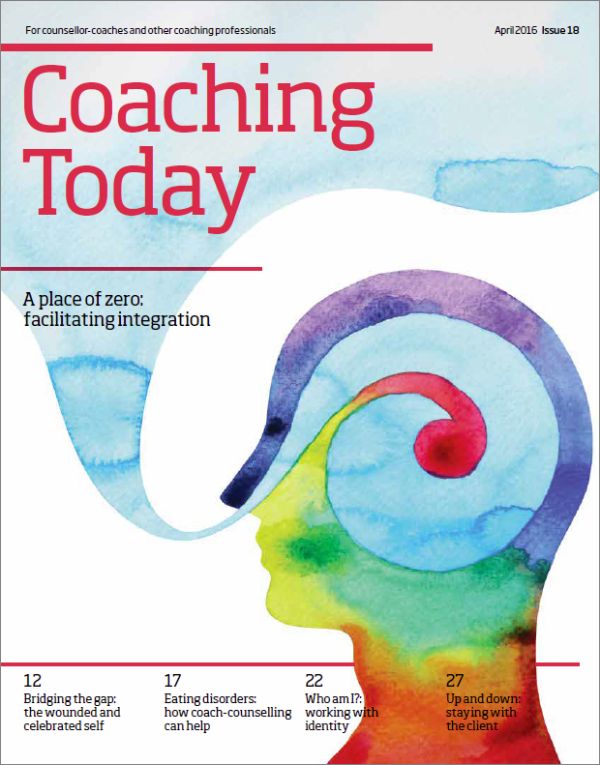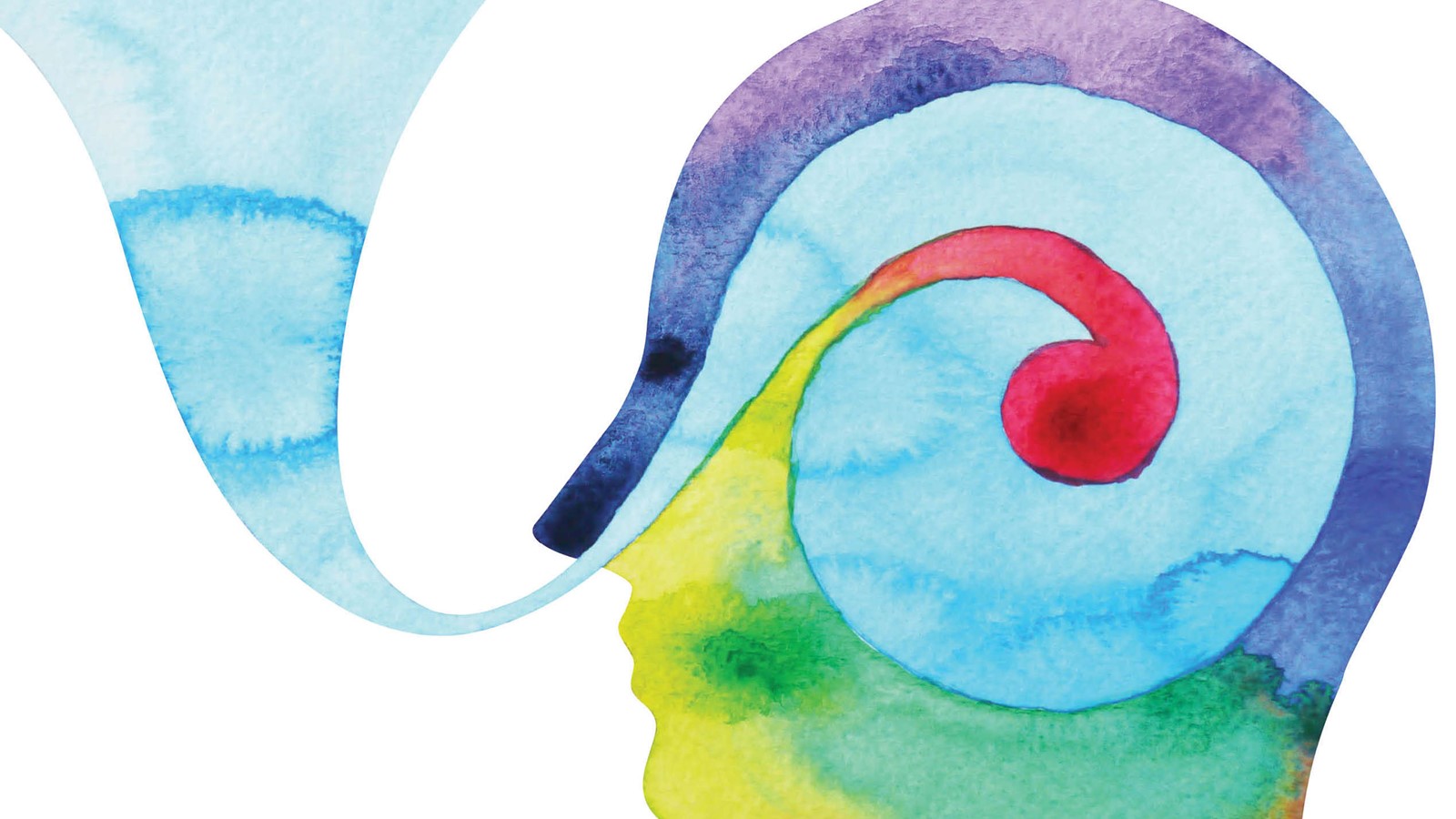In this issue
Features
Facilitators of integration: finding ‘a place of zero’ (free article)
Margaret Chapman-Clarke
The bridge between two selves
Simon Western
Identity crisis? Working with identity in coaching
Nick Bolton
Learning to stay in relationship with our clients through our own ups and downs
Ann Knights
Regulars
Opinion: Coaching has a vital role to play in eating disorder recovery
Gill Fennings-Monkman
Meet the team
Becky Wright – Executive Specialist for the Promotion of Therapists who Coach (TWC)

A pdf of this issue is available in the Coaching Today archive
Editorial
I don’t know about you, but for me, 2016 has rushed in like a whirlwind. New clients, commissions and projects have appeared seemingly from out of nowhere, and at the beginning of this year, at a time when nature is urging us to rest and recuperate, I had a strong sense that the seeds I had sown throughout 2015 had suddenly sprouted and come to fruition all at once, leaving me with the same anxious and uneasy feeling I get when I see spring flowers pushing through the earth during a mild winter.
In a neat bit of parallel process, this is a theme I see emerging with my clients too, many of whom, like me, have multilayered ‘portfolio’ businesses, and are often juggling myriad projects at any one time: ‘It’s January – I don’t understand why I’m so busy!’ And – like the early spring daffs, in danger of frostbite – ‘I’m not ready for this!’
With my clients – as with myself – I can choose to take a purely pragmatic approach, and focus on prioritising, goal-setting and achieving a healthy work-life balance for the duration of the project(s). But this approach alone doesn’t work for me, and it doesn’t really work for my clients either. The alternative is to create a space where we can think and feel our way into the work, to identify our relationship to work, to play, to ‘busyness’, to overwhelm, to winter and the changing seasons, and ourselves as embodiments of nature, using metaphor, imagery and symbolism to make sense of it all and our place in it. For myself, and my panic and anxiety at the sudden overwhelm, I realised I could either continue to resist the flowering and repeat my claim that I was ‘not ready’, or I could accept what was happening, extend compassion to myself and carve out time and space for ‘hibernation’ however and whenever I could, even if that meant saying ‘no’ to things I would ordinarily have said ‘yes’ to. My flourishing spring flowers have therefore given me the opportunity to re-examine my boundaries and limitations, my relationship to work and play, to my body and nature, and how much of that is wrapped up in my identity as a ‘multiskilled, multifaceted’ practitioner who can turn her hand to anything and still be ‘available’ – for her clients, her friends and loved ones. I had to find that still place at my centre that is beyond my identity, beyond the story I tell myself (and others) about who I am and what I do, and carve out time and space to simply be.
So Margaret Chapman-Clarke’s feature article on how coach-counsellors are ideally placed to help clients reach that ‘place of zero’ resonated powerfully with me. She demonstrates an auto-ethnographic approach to viewing a situation, in much the same way I viewed my own ‘flourishing’ – in the end as neither chaos to be ‘tamed’ nor abundance to be ‘managed’, but the place of zero ‘from which creativity can emerge and integration be achieved’. As she explains, this approach does away with the dualistic mind/body split, beyond ideas of ‘right’ and ‘wrong’, of ‘doing’ and ‘being’, and opens up a creative space where both a pragmatic and an embodied approach can co-exist. It’s an approach that recognises that one size does not fit all. I’d be interested to hear if this resonates with you too.
Elsewhere, on the subject of identity, existential coach Nick Bolton explores how we construct our own sense of identity and the narratives we create to support this, and how we can help our clients in the coaching relationship to facilitate deeper understanding of these narratives. Meanwhile, Simon Western looks at the history of therapy and coaching as two separate fields of practice; the former the domain of the ‘wounded self’, and the latter that of the ‘celebrated self’ – and how skilful coaching provides a bridge between these two selves – neither one nor the other but embracing both at the same time. Finally, Ann Knights follows up her article in our January issue on accepting ourselves, ‘foibles and all’, with a piece that examines the impact of this ‘pendulum swing’ from competence to impotence on the relationship with our clients, and how we can learn to stay in relationship through our own ups and downs.
As the seasons shift and the spring flowers blossom, my hope for you all is that you continue to find the middle ground, the bridge, that place of zero from which compassion and creativity can flourish and integration can truly be achieved.
Diane Parker
Editor
editorial@bacpcoaching.co.uk
